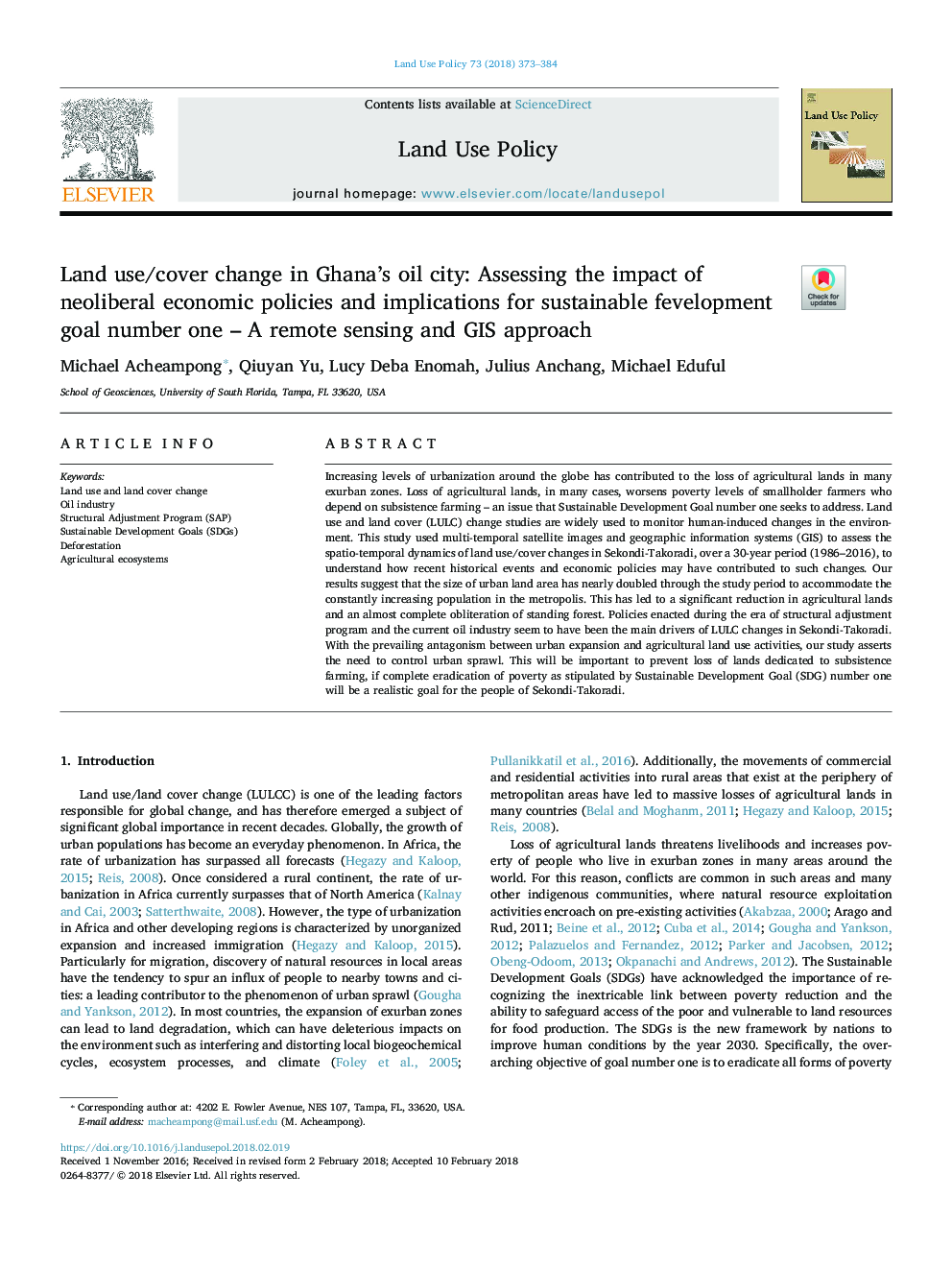| Article ID | Journal | Published Year | Pages | File Type |
|---|---|---|---|---|
| 6546547 | Land Use Policy | 2018 | 12 Pages |
Abstract
Increasing levels of urbanization around the globe has contributed to the loss of agricultural lands in many exurban zones. Loss of agricultural lands, in many cases, worsens poverty levels of smallholder farmers who depend on subsistence farming - an issue that Sustainable Development Goal number one seeks to address. Land use and land cover (LULC) change studies are widely used to monitor human-induced changes in the environment. This study used multi-temporal satellite images and geographic information systems (GIS) to assess the spatio-temporal dynamics of land use/cover changes in Sekondi-Takoradi, over a 30-year period (1986-2016), to understand how recent historical events and economic policies may have contributed to such changes. Our results suggest that the size of urban land area has nearly doubled through the study period to accommodate the constantly increasing population in the metropolis. This has led to a significant reduction in agricultural lands and an almost complete obliteration of standing forest. Policies enacted during the era of structural adjustment program and the current oil industry seem to have been the main drivers of LULC changes in Sekondi-Takoradi. With the prevailing antagonism between urban expansion and agricultural land use activities, our study asserts the need to control urban sprawl. This will be important to prevent loss of lands dedicated to subsistence farming, if complete eradication of poverty as stipulated by Sustainable Development Goal (SDG) number one will be a realistic goal for the people of Sekondi-Takoradi.
Keywords
Related Topics
Life Sciences
Agricultural and Biological Sciences
Forestry
Authors
Michael Acheampong, Qiuyan Yu, Lucy Deba Enomah, Julius Anchang, Michael Eduful,
